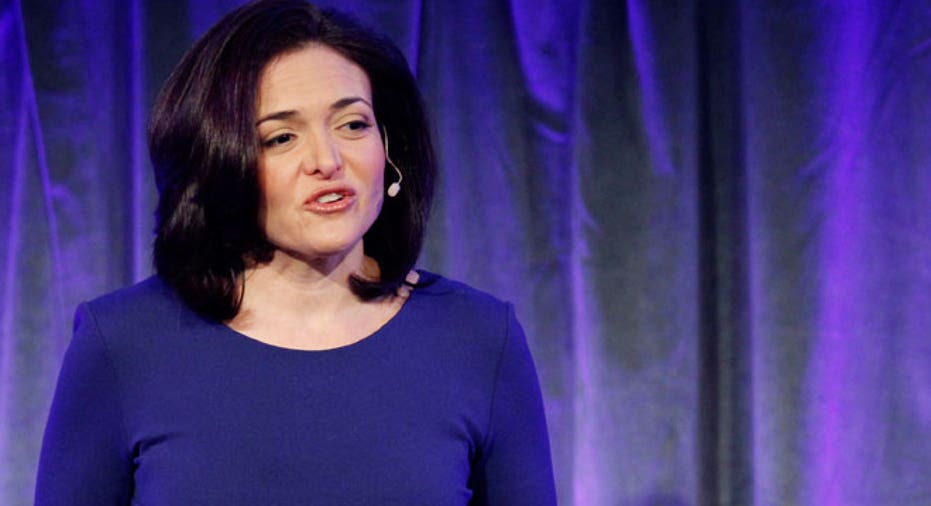Get Me a Sheryl! Facebook COO Model to be Mirrored

While Mark Zuckerberg understandably gets most of the credit for Facebook’s (NASDAQ:FB) storybook success, Sheryl Sandberg deserves a huge assist for helping the social network reach the pantheon of technology companies.
Since Sandberg jumped from Google (NASDAQ:GOOG) to Facebook as Zuckerberg’s well-respected No. 2 in 2008, the company’s revenue has surged from $150 million to almost $4 billion and this week it pulled off the most lucrative initial public offering in Silicon Valley history.
The success of bringing Sandberg on board as the experienced chief operating officer to guide an immature founding CEO will likely prompt other evolving tech companies to consider it as a model as they ponder their own IPOs.
“I think it’s a great model because a lot of these founders are tech and product focused. You want to keep them in that role,” said Jeffrey Bussgang, general partner at venture-capital firm Flybridge Capital Partners. Yet, he added, “As companies scale you need experienced executives to keep the trains running on time.”
Facebook Ushers in New Model
Traditionally, founding tech CEOs are convinced to fade into the background, paving the way for a more established executive with a deeper resume to take over and guide the company into the public markets.
This was the model used for countless tech companies as they matured, including Google (NASDAQ:GOOG), eBay (NASDAQ:EBAY) and LinkedIn (NYSE:LNKD), who brought in Eric Schmidt, Meg Whitman and Jeff Weiner, respectively.
The thinking is that these young companies need someone who will be more comfortable in front of Wall Street audiences and who can provide superior leadership skills.
“That was the old model,” said Bussgang, an undergraduate and business school classmate of Sandberg's at Harvard. “The new model is there is enough pride and recognition of the COO role when you have a young technical CEO besides you. People used to look down on that and now it’s a badge of honor.”
In Facebook’s case, the presence of Sandberg, 42, has helped give credibility and leadership to the company while simultaneously freeing up Zuckerberg, 28, to focus on what matters most: improving the user experience.
“I think boards are just being smarter about the positive cultural impact that keeping the founder in place over the long haul can have. The founder represents the soul of the company,” said Bussgang.
A longtime Facebook exec told New York Magazine the partnership between the Zuckerberg and Sandberg has been “a blessing from the gods.”
Leave the Boring Stuff to the COO
Bussgang said Facebook wouldn’t have been able to achieve its current success -- this week it became second-biggest IPO in U.S. history by raising $18.41 billion -- without the guidance of Sandberg.
“I think Sheryl was very central to the story,” he said.
The Sandberg model could even eventually be duplicated by current and former Facebook employees, many of whom just became overnight millionaires in the IPO and could soon attempt to launch their own companies.
Sandra Davis, CEO of MDA Leadership Consulting in Minneapolis, said in an email that other young tech companies could attempt to duplicate this experience, but “only if the board can convince a founder that he or she cannot do it all.”
Davis added, “Having an example to show might make it an easier sell.”
Besides holding up Facebook as an illustration, boards may also be able to sell founding CEOs on the idea of hiring a Sandberg-type No. 2 by explaining it means “you won’t have to do some of the things you dislike,” said Davis.
This could include “less fun” activities such as IPO road shows, which Zuckerberg had a limited role in last week, analyst conference calls and meetings with shareholders.
“Running a publicly-traded company is very different than running a private one,” said David Becher, a finance professor at Drexel University. “It’s one thing to talk to other engineers or techs about your company; it’s another thing to talk to Wall Street.”
Facebook Experience Tough to Duplicate
Becher warned that a founding CEO who sticks around for too long can ultimately backfire.
He pointed to Yahoo! (NASDAQ:YHOO), where founder Jerry Yang reassumed the CEO post after originally fading into the background. Yang was the driving force behind his Internet company’s rejection of a $44.6 billion buyout bid from Microsoft (NASDAQ:MSFT) in 2008. Today Yahoo! has a market cap of just over $18 billion.
“Having the founder provides intellect and passion, but CEOs can stay on too long. They view it as their baby,” said Becher.
Of course, just because hiring Sandberg worked at Facebook, doesn’t mean this model will work elsewhere.
Davis said she could envision a number of situations where combining a young entrepreneur with an experiences businessperson could result in disaster.
“It is really tricky to find the right duo or combination,” said Davis. “This is a difficult topic and a board would be foolish to think it is easy to replicate.”
Observers pointed a number of factors that allowed Facebook combination to flourish, including the mutual respect and trust between the two executives, Zuckerberg’s willingness to learn and cede some power and Sandberg’s eagerness to coach and mentor the young CEO.
Also, unlike most of the execs Facebook considered for the COO slot, Sandberg told Zuckerberg during the interview process she would be fine staying in the No. 2 spot, New York Magazine reported.
“I think that Sheryl was uniquely non-threatening to Mark because she didn’t come in with the subtle intent of wanting to be CEO,” said Bussgang. “The chemistry between the two executives is just outstanding.”
The success of this relationship could prove to be especially lucrative for Sandberg, who holds two million shares in Facebook and an additional 39 million that will vest if she stays on board for another few years. That means Sandberg made a paper gain of at least $1.6 billion on this week’s IPO alone.



















